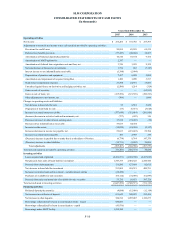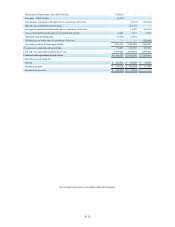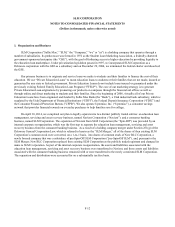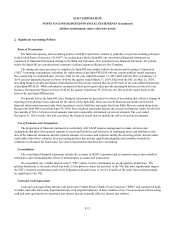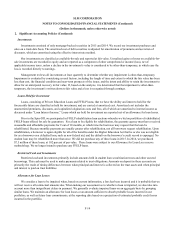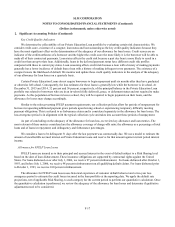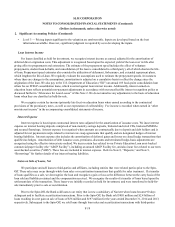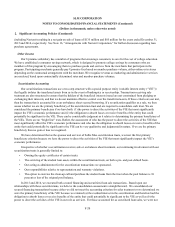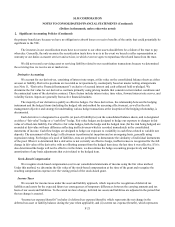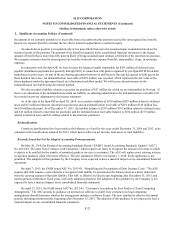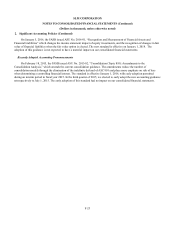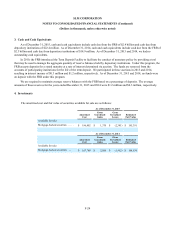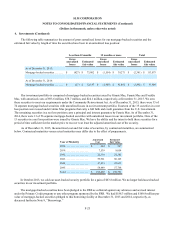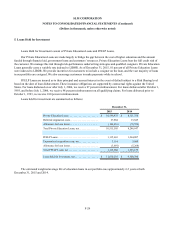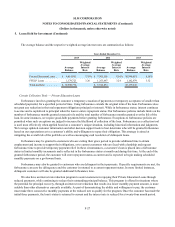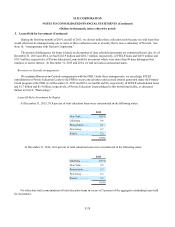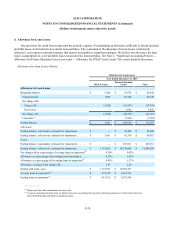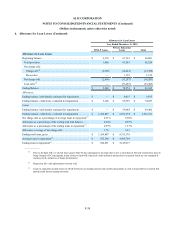Sallie Mae 2015 Annual Report Download - page 110
Download and view the complete annual report
Please find page 110 of the 2015 Sallie Mae annual report below. You can navigate through the pages in the report by either clicking on the pages listed below, or by using the keyword search tool below to find specific information within the annual report.SLM CORPORATION
NOTES TO CONSOLIDATED FINANCIAL STATEMENTS (Continued)
(Dollars in thousands, unless otherwise noted)
2. Significant Accounting Policies (Continued)
F-20
(including Navient) resulting in a net gain on sale of loans of $135 million and $85 million for the years ended December 31,
2015 and 2014, respectively. See Note 16, “Arrangements with Navient Corporation,” for further discussion regarding loan
purchase agreements.
Other Income
Our Upromise subsidiary has a number of programs that encourage consumers to save for the cost of college education.
We have established a consumer savings network, which is designed to promote college savings by consumers who are
members of this program by encouraging them to purchase goods and services from the merchants that participate in the
program. Participating merchants generally pay Upromise fees based on member purchase volume, either online or in stores
depending on the contractual arrangement with the merchant. We recognize revenue as marketing and administrative services
are rendered, based upon contractually determined rates and member purchase volumes.
Securitization Accounting
Our securitizations transactions use a two-step structure with a special purpose entity (variable interest entity (“VIE”))
that legally isolates the transferred assets from us in the event of bankruptcy or receivership. Transactions receiving sale
treatment are also structured to ensure that the holders of the beneficial interests issued are not constrained from pledging or
exchanging their interests, and that we do not maintain effective control over the transferred assets. If these criteria are not met,
then the transaction is accounted for as an on-balance sheet secured borrowing. If a securitization qualifies as a sale, we then
assess whether we are the primary beneficiary of the securitization trust and are required to consolidate such trust. We are
considered the primary beneficiary if we have both: (1) the power to direct the activities of the VIE that most significantly
impact the VIE’s economic performance and (2) the obligation to absorb losses or receive benefits of the entity that could
potentially be significant to the VIE. There can be considerable judgment as it relates to determining the primary beneficiary of
the VIEs. There are no “bright line” tests. Rather, the assessment of who has the power to direct the activities of the VIE that
most significantly affect the VIE’s economic performance and who has the obligation to absorb losses or receive benefits of the
entity that could potentially be significant to the VIE can be very qualitative and judgmental in nature. If we are the primary
beneficiary then no gain or loss is recognized.
We have determined that as the sponsor and servicer of Sallie Mae securitization trusts, we meet the first primary
beneficiary criterion because we have the power to direct the activities of the VIE that most significantly impact the VIE’s
economic performance.
Irrespective of whether a securitization receives sale or on-balance sheet treatment, our continuing involvement with our
securitization trusts is generally limited to:
• Owning the equity certificates of certain trusts.
• The servicing of the student loan assets within the securitization trusts, on both a pre- and post-default basis.
• Our acting as administrator for the securitization transactions we sponsored.
• Our responsibilities relative to representation and warranty violations.
• The option to exercise the clean-up call and purchase the student loans from the trust when the pool balance is 10
percent or less of the original pool balance.
In 2015 and 2014, we executed both secured financing and securitized loan sale transactions. Based upon our
relationships with these securitizations, we believe the consolidation assessment is straightforward. We consolidated our
secured financing transactions because either we did not meet the accounting criterion for sales treatment or we determined we
were the primary beneficiary of the VIE because we retained (a) the residual interest in the securitization and therefore had the
obligation to absorb losses or receive benefits of the entity that could potentially be significant to the VIE as well as (b) the
power to direct the activities of the VIE in our role as servicer. For those accounted for as securitized loan sales, we were not


